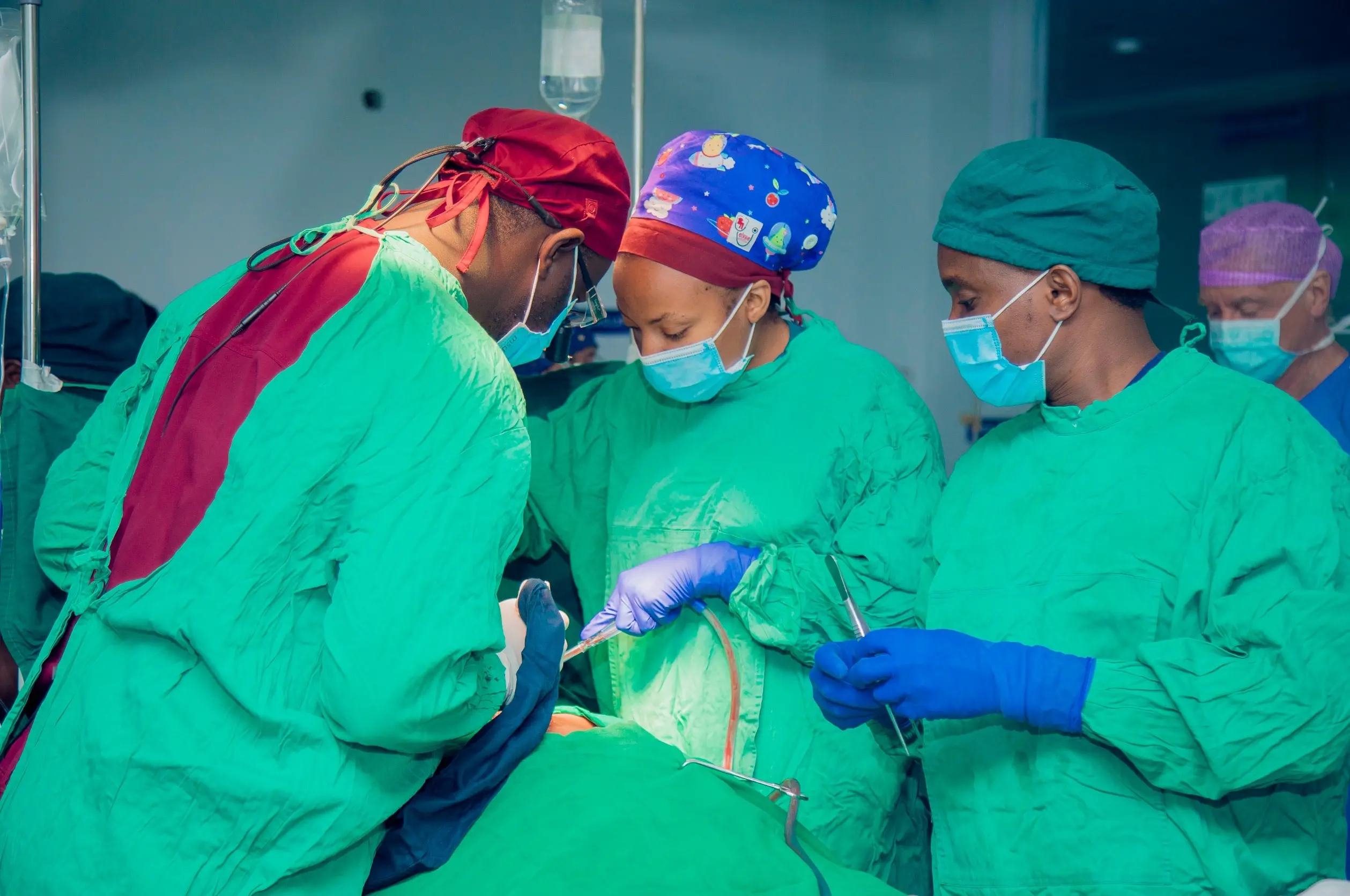Huduma za Upasuaji wa matundu madogo

Huduma za Upasuaji wa Matundu Madogo
“Upasuaji wa matundu madogo,” pia hujulikana kama “upasuaji wa kisasa usiohitaji kufungua tumbo kwa kiasi kikubwa” ni mbinu ya kisasa ya upasuaji inayotumia matundu madogo na vifaa maalum kwa ajili ya kuchunguza na kutibu matatizo ndani ya tumbo na nyonga.
Katika Hospitali ya Benjamin Mkapa (BMH), Kitengo cha Upasuaji wa Matundu Madogo kimewekewa teknolojia ya kisasa na kina timu ya wataalamu waliobobea waliodhamiria kutoa huduma salama, za haraka na zenye matokeo bora kwa mgonjwa kwa kupunguza madhara na maumivu.
Aina za Upasuaji wa Matundu Madogo Unaofanyika BMH
- Laparoscopic Cholecystectomy
Kuondoa kibofu cha nyongo, hasa kwa wagonjwa wenye mawe kwenye nyongo. - Laparoscopic Appendectomy
Kuondoa kidole tumbo kilichojaa usaha au kilichovimba. - Laparoscopic Hernia Repair
Kutibu ngiri ya tumboni (inguinal, umbilical au incisional) kwa kutumia wavu maalum kuimarisha ukuta wa tumbo. - Laparoscopic Hysterectomy
Kuondoa mji wa mimba kwa wagonjwa wenye matatizo kama uvimbe (fibroids), kutokwa damu nyingi, au saratani. - Laparoscopic Ovarian Cystectomy
Kuondoa uvimbe kwenye ovari bila kuathiri ovari yenyewe. - Laparoscopic Myomectomy
Kuondoa uvimbe kwenye mji wa mimba (fibroids) huku mji wa mimba ukihifadhiwa – hasa kwa wanawake wanaotamani kupata watoto baadae. - Diagnostic Laparoscopy
Uchunguzi wa ndani wa viungo vya tumbo au nyonga ili kugundua chanzo cha maumivu au utasa. - Laparoscopic Colorectal Surgery
Hutumika kutibu saratani ya utumbo mpana, diverticulitis, au magonjwa ya uvimbe wa matumbo (inflammatory bowel disease). - Laparoscopic Nephrectomy
Kuondoa figo iliyoharibika au kuathirika. - Laparoscopic Adhesiolysis
Kukata na kuondoa makovu ya ndani ya tumbo (adhesions) yanayosababisha maumivu au kuziba kwa njia ya chakula.
Faida za Upasuaji wa Matundu Madogo
- Matundu madogo tu huachwa kwenye ngozi, hivyo hupunguza maumivu ya baada ya upasuaji
- Mgonjwa hupata nafuu haraka na hutolewa hospitalini mapema
- Hatari ndogo ya maambukizi na matatizo mengine
- Makovu madogo na mwonekano mzuri wa ngozi baada ya kupona
Vifaa Vinavyotumika Katika Upasuaji wa Matundu Madogo
- Laparoscope
Mrija mrefu na mwembamba wenye kamera ya hali ya juu na chanzo cha mwanga kwa ajili ya kuona viungo vya ndani. - Trocars
Mirija maalum inayowekwa kupitia matundu madogo ili kuruhusu vifaa vingine vya upasuaji kupita. - Insufflator
Kifaa kinachopuliza gesi ya kaboni dayoksaidi (CO₂) ndani ya tumbo ili kulipanua na kurahisisha kuona na kufanya upasuaji. - Runinga na Mfumo wa Video
Skrini ya ubora wa hali ya juu inayonyesha picha za ndani kutoka kwenye laparoscope. - Mashine ya Umeme ya Upasuaji (Electrosurgical Unit – ESU)
Mashine inayotumika kukata tishu au kusimamisha damu kwa kutumia umeme. - Vishikio, Mikasi na Vyombo vya Kugawanyia Tishu (Dissectors)
Vifaa maalum vinavyopitishwa kupitia trocars ili kushika, kukata au kuondoa tishu. - Chanzo cha Mwanga na Nyaya za Fiber Optic
Hutoa mwanga mkali na wa moja kwa moja ndani ya mwili wa mgonjwa. - Kifaa cha Kunyonyoa/Kuosha (Suction/Irrigation)
Hutumika kusafisha eneo la upasuaji kwa kuondoa maji au damu. - Vifaa vya Nguvu (Energy Devices) kama Harmonic Scalpel au LigaSure
Vifaa vya kisasa vinavyotumia mawimbi ya nishati au umeme kukata na kufunga mishipa ya damu kwa usahihi na usalama.
Hitimisho
Kwa ujumla, huduma hizi zinalenga kutoa matibabu ya kisasa yanayomwezesha mgonjwa kupona haraka kwa usalama na kwa mafanikio makubwa.

